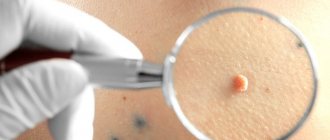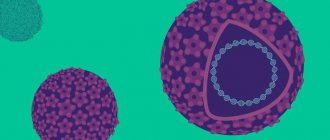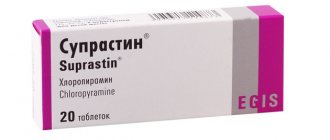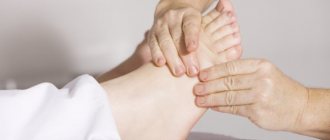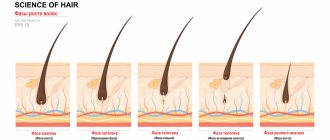Psoriasis is diagnosed in children as often as in adults. Many parents mistake its symptoms for clinical manifestations of dermatitis and treat it themselves. Dermatologists warn that early detection of psoriasis and timely therapy help achieve sustainable remission. This means that there is no need to worry about painful relapses in the future.
General information about the disease
Among all dermatological diseases, the share of psoriasis in adults is approximately 7-8%, in children under 16 years of age - 4%. Even newborns, more often females, are susceptible to it.
The disease is not contagious, but the theory of its viral origin has not yet been rejected.
Psoriasis manifests itself equally at any age, but in childhood it often has uncharacteristic symptoms (atypical appearance), which can make diagnosis difficult. Thus, many dermatoses that affect the scalp and skin in the buttock area are similar to this disease. Source: Clinical guidelines “Psoriasis in children” Union of Pediatricians of Russia, 2016.
If at least one of the parents suffers from this disease, then the chance of its development in the child is 50%, if both - 60%. In the case of identical twins, if one of them is affected, the second will get sick with a 75% probability. Initially, psoriasis in a child appears in the groin area, lower back, rarely on the face, and later it is localized on the elbows, head, under the knees, spreads along the entire back, affects the armpits, and nails.
Almost half of all psoriasis sufferers acquired the disease in childhood. However, the first stage is often not detected due to the mildness of symptoms. Source: Benoit S., Hamm H. Childhood psoriasis // Clin. Dermatol. 2007. Vol. 25. P. 555–562.
The prognosis with early detection is good. In this case, local therapy is highly effective, followed by long-term remission (up to several years).
Statistical power of GWAS
Due to the relatively high heritability of psoriasis, many genetic studies have been conducted around the world looking for genes that influence the risk of developing the disease. GWAS help to bring at least some clarity to the confusing pathogenesis of psoriasis, since their results allow us to identify “primary suspects” - genes in which changes are more common in patients, and therefore are associated with the development of this pathology.
The first article in the series already mentioned PSORS (psoriasis susceptibility loci) - areas associated with the risk of developing psoriasis [5]. Overall, GWAS have identified approximately 50 psoriasis susceptibility sites [6]. Although each such region covers several genes, researchers have identified individual genes within each locus that they consider the most plausible “culprits” of the disease from a biological point of view, taking into account the function of the proteins they encode [1]. The contribution of genes detected by GWAS to the heritability of the disease is less than 25% for Europeans [7], although this may be due to the fact that it is difficult to detect rare variants in genes associated with psoriasis risk using GWAS.
However, genetic risk factors are not a death sentence. Just because a person has a gene variant associated with the risk of psoriasis does not mean that they will develop the disease. For example, the majority of carriers of the HLA-Cw6 allele, the most “powerful” predisposition factor, do not have psoriasis [3].
Now it’s finally worth looking at what genes influence psoriasis. The basis of psoriasis is increasingly believed to be a disruption of the interaction between immune cells and resident skin cells (Fig. 2) [8]. Moreover, the alleles identified as “risk factors” may be active only in one type of cell—for example, in skin cells or in some type of immune cell—or they can function in different types of cells. Thus, to understand what psoriasis is from a genetic point of view, you need to put together at least three pieces of the puzzle: innate immunity, acquired immunity and skin barrier function [1]. An illustration of innate immunity is the NF-kB signaling pathway; an example of adaptive would be genes involved in the process of antigen presentation; and finally the conversation will turn to genes whose products are important for maintaining the barrier function of the skin.
Of course, there are many more pieces to the puzzle, and GWAS has identified many psoriasis susceptibility loci associated with other molecular cascades. However, these three topics are the most important.
Figure 2. Model of psoriasis. Polymorphism of genes involved in maintaining skin barrier function and immune defense determines the outcome of environmental influences. How many antigens enter the body, whether inflammation occurs due to damage or activation of keratinocytes, and whether immunocompetent cells are recruited to the site often depends on the genotype. As a result, exposure to unfamiliar external antigens or self-antigens similar to foreign molecules may activate the adaptive immune cascades in some people. An immune response develops, Th1 and Th17 cells (T helper cells) secrete cytokines, which entails activation of keratinocytes. So the process goes in cycles, and inflammation becomes chronic.
[15], figure adapted
Innate immunity: NF-kB signaling pathway
Innate immunity plays an important role in the development of psoriasis. Thus, using GWAS data, genes in the innate immune signaling cascades associated with the pathogenesis of psoriasis were identified for the European population. Many of them are already familiar to the reader from the article “Pathogenesis of psoriasis: T helper cells, cytokines and molecular scars”: genes of the NF-kB cascade (for example, REL, TNIP1, NFKBIA and CARD14), participants in T cell regulatory pathways (for example, RUNX3, IL13, TAGAP, ETS1 and MBD2) and antiviral signaling (e.g. IFIH1, DDX58 and RNF114) [9]. The work of these genes is illustrated in the pictures below.
How can the development of this disease be influenced by genes encoding various molecules from the NF-kB signaling cascade, which we chose as an example? The NF-kB pathway primarily regulates the cellular response to stress, such as infection [10]. It also plays an important role in inflammation and apoptosis. This signaling pathway has been repeatedly shown to be activated in skin affected by psoriasis. NF-kB is a key transcription factor in immune responses (in all cell types, not just immune cells). It is found in the cell cytoplasm in complex with its inhibitor IkB. Many cellular immune signaling receptors cause activation of the NF-κB signaling cascade. After binding of the activating ligand to the surface receptor, the activating signal is transmitted into the cell mediated by adapter proteins, the IkB inhibitor is phosphorylated by IkB kinase (IKK) and undergoes degradation, and the released NF-kB is sent to the nucleus, where it induces the expression of genes associated with inflammation [ 6].
NF-kB itself is a dimer, which may include different subunits: p50, p52, RelA(p65), Rel-B, c-Rel. The c-Rel gene is located in the susceptibility locus for psoriasis. In addition, c-Rel can directly regulate keratinocyte growth and cell cycle progression.
One of the important adapter proteins that regulate NF-kB activation is the CARD14 protein from the CARD family. Research has shown the role of proteins of this family in the development of psoriasis, as well as other inflammatory diseases. Of all the proteins of the family (CARD6,8,9,10,11,14), CARD14 is the most important for the development of psoriasis (Fig. 3) and, perhaps, the least studied. Scientists discovered that its gene is included in one of the psoriasis susceptibility loci, PSORS2, and the protein is synthesized in keratinocytes and endothelial cells. Disease-causing mutations in CARD14 activate NF-kB signaling and the production of several inflammatory cytokines and chemokines in both cell types [6]. At this point, we are not saying goodbye to CARD14 - it will still be useful to us in our conversation about the subtypes of psoriasis.
Figure 3. Signaling pathway involving CARD14 in some types of psoriasis - for example, generalized postular (discussed below in the text). Mutations in the CARD14 gene lead to activation of NF-kB signaling in keratinocytes, and this induces the secretion of chemokines, including IL-36G, IL-8 and CCL20. As a result, inflammatory cells are attracted to the site of inflammation, and the disease develops. Legend: DC - dendritic cells, KC - keratinocytes, Neutro - neutrophils, Th17 - T helper cells 17.
[16]
Adaptive immunity: antigen presentation
Although abnormalities in innate immune genes increase the risk of psoriasis, adaptive immunity genes also contribute to the development of the disease. According to genetic studies, the locus that plays the most important role in susceptibility to psoriasis in European and Chinese populations is HLA-Cw6. It is included in PSORS1 and, depending on the population studied, occurs in every fifth, or even every second, patient with psoriasis. HLA-Cw6 is one of the alleles of the major histocompatibility complex I (MHCI) receptor gene HLA-C. MHCI proteins are located on nucleated cells and are key molecules in immune surveillance. They present intracellular peptides to cytotoxic T cells of the immune system (Fig. 4). If the antigen turns out to be foreign, then an immediate reaction follows: immune cells selectively kill only these damaged or infected cells.
Figure 4. Diagram of interaction between a T cell and an antigen presenting cell. Proteins associated with autoimmunity and psoriasis have been identified. After the formation of an immunological synapse between the T cell and the antigen presenting cell, the T cell is activated, which is under the control of a complex network of positive and negative (colored green) regulators. Proteins with increased expression in psoriatic plaques are marked in red. Among them are T-cell receptor (TCR), δ-chain CD3, CD4, CD8, α-chain of IL-2 receptor (IL-2Rα, CD25), LFA1 (lymphocyte function-associated antigen 1), LCK, SHB (SRC homology 2 (SH2)-domain-containing transforming protein B), FYB (FYN-binding protein) and WIP (Wiskott-Aldrich syndrome (WASP) interacting protein).
Some of the negative regulators of T-cell activation are associated with the autoimmune response in humans: CTLA4 (cytotoxic T-lymphocyte antigen 4), PDCD1 (programmed cell death 1), SLC9A3R1 (solute-carrier family 9, isoform 3, regulator 1), PSTPIP1 ( proline-serine-threonine phosphatase-interacting protein 1) and SUMO4 (small ubiquitin-like modifier 4 protein).
In addition, in animal models of psoriasis and autoimmune diseases, negative regulators of T-cell activation were discovered: CTLA4, PDCD1, SHP1 (SH2-domain-containing protein tyrosine phosphatase 1), IkB, PAG (phosphoprotein associated with glycolipid-enriched membrane domains) and CSK (carboxy-terminal SRC kinase). The transcription factors RUNX1 (run-related transcription factor 1) and RUNX3 are involved in the transcriptional regulation of several of the upregulated proteins (TCR, CD3, CD4, CD8, and LFA1) and negative regulators (PDCD1 and SLC9A3R1), as indicated in the figure in red text.
Other molecules associated with autoimmune or inflammatory diseases in humans are ICAM1 (intercellular adhesion molecule 1), CD45, PTPN22 (protein tyrosine phosphatase non-receptor type 22), WASP and pyrin.
Several molecules critical for T cell activation have emerged as effective targets for the treatment of human psoriasis. ARP (actin-related protein), CDC42 (cell-division cycle 42), ERM (ezrin, radixin and moesin), IFN-γ (interferon-γ), NFAT (nuclear factor of activated T cells), PI3K (phosphatidylinositol 3- kinase), STAT (signal transducer and activator of transcription), TNF (tumour-necrosis factor), TNFR2 (TNF receptor 2), ZAP70 (ζ-chain-associated protein kinase of 70 kDa).
[23]
Scientists have associated polymorphisms of the ERAP1 gene with predisposition to psoriasis [6]. It encodes endoplasmic reticulum aminopeptidase 1, which is also involved in the process of peptide presentation to MHCI.
An important role of the IL23-Th17 axis in the development of psoriasis was identified: in particular, the genes TNFAIP3, IL23R, IL12B, TRAF3IP2, IL23A and STAT3 (Fig. 5). As it turned out, Th17 at the site of inflammation release cytokines IL-1, IL-17 and other molecules that act on keratinocytes, thereby activating them [9], [11]. This finding allowed the development of IL-23 or IL-17 inhibitor drugs, which can be used in clinical practice with varying degrees of success. And one such drug will be discussed in the chapter on pharmacogenomics.
Figure 5. At the intersection of genetics and immunology of psoriasis. Dendritic cells in the dermis perform an antigen-presenting function by activating T cells (the main fighters of adaptive immunity). Cytokines produced by T cells activate keratinocytes, leading to the release of various protective proteins - defensins, psoriasin and others. If a person is a carrier of the HLA-Cw6 variant, the activation may be excessive. In addition, if a person has variants of the TNFAIP3, TNIP1 and other genes associated with psoriasis, excessive activation of immune cells may also be observed: contact with pathogens triggers excessive activity of the receptors that recognize them (TLR) and activates the regulatory protein NF-kB, which leads to excessive inflammation.
Middle: Most T cells in the dermis are CD4+ helper cells (highlighted in purple); most of them are T helper cells type 1 ( Th1 ), but some also secrete IL-17 ( Th17 , T helper cells type 17, yellow halo around the cell). The majority of epidermal T cells are CD8+ killer T cells ( Tc1 , green), secreting IL-1, and Tc17 , secreting IL-17 (highlighted with a yellow halo).
Top right: The role of the HLA-Cw6 allele in increasing susceptibility to psoriasis is associated with antigen presentation processes between dendritic cells ( DC ), keratinocytes ( KC ) and killer T cells types 1 and 17.
Bottom right: Macrophages ( MF , orange) and dendritic cells express TNF receptors and Toll-like receptors (TLRs), which trigger signaling cascades of NF-kB activation. Proteins encoded by the TNFAIP3 (A20) and TNIP1 (ABIN1) genes are capable of blocking these signaling cascades.
Left: Th1 cells activate dendritic cells to produce IFN-γ. Activated DCs produce IL-23A and IL-12B, cytokines that bind to the IL23 receptor (IL23R) on the surface of Th17. Polymorphisms of all of these genes may be associated with an increased susceptibility to psoriasis. IL-17 and IL-22 regulate the innate mechanisms of immune defense of keratinocytes (synthesis of defensins, psoriasis S100A7 and other proteins whose expression is increased in psoriatic plaques). In addition, IL-22 may enhance keratinocyte proliferation and/or alter their differentiation.
[3]
Genetics and skin barrier function
As noted in previous articles, psoriatic lesions differ from healthy skin at the cellular level. They are characterized by altered differentiation of keratinocytes and defective keratinization, including impaired formation of the keratinized layer of cells. Water loss through the skin is greater in patients with psoriasis than in healthy people. Although the underlying molecular mechanism for this feature is not yet clear, it is believed that keratinocytes are to blame, as they fail to cope with the task assigned to them in maintaining the barrier function.
The keratinocytes of the stratum corneum themselves in healthy skin are immersed in a lipid matrix, which maintains the barrier functions of the skin. This structure is figuratively compared to bricks held together with mortar. With the development of psoriasis, the lipid profile changes, the amount of lipids decreases, and, consequently, the barrier function is impaired [12], [13].
In psoriasis, protein synthesis in the stratum corneum is unbalanced compared to healthy skin. Many genes, mutations in which lead to the development of psoriasis, are part of the epidermal differentiation complex [14]. For example, the expression of early differentiation markers involucrin, corneodesmosin (CDSN), cystatin A, small proline-rich proteins, and transglutaminase 1 is increased, whereas the expression of late differentiation markers such as loricrin and filaggrin is decreased. Because of this, the outer keratinized layer of cells is not formed as it should, which can also affect the barrier function of the skin [15].
Beta-defensins are peptides that have a broad spectrum of antimicrobial activity and are responsible for maintaining the skin's chemical barrier. The relative risk of psoriasis was found to increase with each additional copy of the human beta-defensin 2 (hBD-2) gene, DEFB4, in the genome (above the first two copies). In other words, if there is an excess number of beta-defensin genes in the genome, the likelihood of developing psoriasis increases.
As studies of the genomes of Europeans and Chinese have shown, the group of LCE genes (late cornified envelope genes) also plays a large role in the development of psoriasis - it is also part of the complex of epidermal differentiation genes (Fig. 6). The LCE cluster of 18 genes encodes proteins of the stratum corneum of the epidermis. In the context of talking about psoriasis, special attention should be paid to the LCE3C and LCE3B genes, which are part of PSORS4 [7]. It is assumed that deletions of these genes impair the restoration of skin barrier function after injury [9]. However, as scientists admit, such reasoning is now more like speculation: the frequency of occurrence of deletions in the general population is also very high - about 60–70%. Perhaps these mutations did not arise out of nowhere and even helped from an evolutionary point of view. Thus, if after a minor injury the skin barrier is not fully restored and antigens enter the body through it, they, on the one hand, will not cause serious infection, and on the other hand, they will stimulate the functioning of the immune system [15].
Figure 6. Production of hBD-2 and LCE2 proteins in the skin. a — The hBD-2 protein is not synthesized normally (left), but is actively synthesized in psoriasis (right). Scale: 100 µm. b — LCE2 protein production in normal skin. Arrows indicate gold-labeled anti-LCE2 antibodies, revealing keratinized membranes of healthy skin. Method: immunoelectron microscopy, scale: 200 nm.
[15]
Causes of psoriasis in children
Research continues all over the world to identify the causes of
this disease.
However, they have not yet been reliably established. The main theory is genetic predisposition
.
Scientists name the following as provoking factors:
- skin injury;
- lithium-containing medications;
- infectious diseases;
- metabolic disorders;
- dysfunction of the endocrine system;
- stress;
- smoking and drinking alcohol (applies to adults and adolescents);
- weak immunity.
Normally, skin cells mature in 30 days, but with this disease – in 4-5. As a result, papules are formed. The same abnormalities are found in apparently healthy tissues, and not just in areas of rashes.
Symptoms of the disease
Psoriasis occurs in children in four stages: initial, progressive, stationary, regressive. Depending on this, the symptoms vary.
| Stage | Manifestations |
| Initial | Small rashes of a pinkish tint, the surface is smooth, shiny, hemispherical in shape. After some time, whitish or silver scales appear on them. |
| Progressive | The rashes grow and merge into conglomerates, the scales are located only in the center of the papules, along the edge of which there is a pink border. If the affected skin is injured, then after about a week a papule appears in this place, exactly repeating the shape of the injury (Koebner's symptom). |
| Stationary | New papules do not appear, old ones stop growing, peeling intensifies and spreads over the entire surface of the tubercle. |
| Regressive | Peeling decreases, papules become flatter in the center, gradually disappear, and in their place pigment spots or areas of skin devoid of pigmentation appear. |
Important! Psoriatic plaques have an extremely negative impact on the psychological state of children. Their peers focus on this, shy away for fear of getting infected, etc. Therefore, at the first signs, treatment should be started immediately.
As for babies, before two years of age, the first papules form in the folds of the skin, in the area where a diaper is worn. They differ from diaper dermatitis by their bright color and clear outline, with periodic mild itching.
After 10 years, children may develop psoriasis on the scalp, requiring treatment, which rarely happens at an earlier age.
Psoriatic arthritis often occurs, affecting the joints of the legs and arms. It begins with the onset of symptoms on the skin and develops approximately 10 years after the first rash.
In approximately 15% of cases, the disease affects the toenails and fingernails. Very often, the nail plates are the first to suffer, and skin rashes appear only years later.
Important! The disease has several forms and different symptoms. Any redness, peeling, or small swelling on the skin that does not go away within a week should be an alarm signal for parents. If you start treating your child in a timely manner, the process will not spread throughout the body.
What is GWAS?
Identifying relationships between gene variants and phenotypic manifestations requires studies across multiple genomes. Until the 1990s, such work was not carried out, since there was no suitable technology yet [3]. But now genome-wide association studies, or GWAS (genome-wide association studies), have become much simpler (Fig. 1). Such studies compare genome arrays of healthy people and patients with a diagnosed disease. If one of the alleles occurs much more often in those suffering from the disease, then it is considered associated with it. Today, a huge “library” of genetic markers has already been collected in the form of single nucleotide polymorphisms, or SNPs (single nucleotide polymorphism), differences in one nucleotide. In addition to predisposition to disease, the presence of genetic polymorphisms can affect the absorption, metabolism and excretion of drugs, and therefore their overall effectiveness. Because of this, such data are also useful for pharmacokinetic studies [4].
Figure 1. How GWAS works—the process of finding single nucleotide polymorphisms (SNPs) that correlate with disease risk.
[9], figure adapted
However, GWAS is not a salvation. He rarely gives clear answers, but he encourages further work. The fact is that variants associated with a disease do not always cause the disease directly, and the cause-and-effect relationships of the development of the disease have to be checked and rechecked [1].
Types of disease
Simple forms:
- ordinary, or plaque – areas of redness on the skin with clear boundaries and peeling;
- film - most often diagnosed in newborns, localized on the buttocks, difficult to diagnose because it is similar to diaper dermatitis and other skin ailments.
Heavy varieties:
- psoriatic erythroderma - all skin turns red, joint pain, fever, blisters with pus may be observed;
- pustular - blisters filled with non-purulent fluid appear on the skin, causing fever if widespread;
- psoriatic arthritis - redness and blisters on the skin, asymmetric damage to the joints of the arms and legs.
What is the difference between the disease and diaper dermatitis
There are the following characteristic features. You can recognize psoriasis on a child’s body by looking closely at the outlines of the affected areas. They are clear and well defined and the areas are very vibrant in color. Powder, special ointments for infantile dermatitis, and keeping the baby in the air are good for diaper rash. However, for psoriasis such measures are useless. Therefore, if after the above-mentioned remedies the rash does not disappear, but progresses, it may be psoriasis. This disease also resembles a rash during infection. However, unlike it, there are no symptoms such as high fever, cold symptoms (cough, runny nose), body and joint aches, and muscle pain. This is typical only for ARVI.
Treatment of psoriasis
Therapy depends on the form of the disease, the person’s age, the presence of joint lesions, and previously used techniques. Severe forms often require treatment procedures in a hospital setting.
In each case, possible risks and potential benefits are assessed, especially when it comes to toxic drugs and hormonal drugs. Local treatment is most often used: moisturize the skin, soften it, relieve inflammation. Source: A.R. Umerova, I.P. Dorfman, V.V. Dumchenko, L.P. Makukhina Modern approaches to the treatment of psoriasis in children and adolescents // Russian Medical Journal, 2015, No. 19, p. 1156
In severe cases, systemic therapy may be prescribed. This is necessary when the disease significantly reduces the child’s quality of life. The consent of the child and parents must be obtained for such therapy, because it can lead to a number of side effects. Courses of treatment are usually short, each stage is carefully monitored by a doctor.
After 15 years and/or with extensive lesions, PUVA therapy is performed. The child uses a special drug containing psoralen externally or orally. After about 3 hours, his entire body or individual areas are irradiated with long-wave UV for several minutes. After several sessions every other day, formations on the skin decrease or disappear, peeling and itching are eliminated.
If other methods are ineffective, immunosuppressants are prescribed. However, they increase the risk of malignant tumors, so they are used rarely and under the strictest medical supervision.
Vitamins are prescribed together with any course of treatment: B12, ascorbic acid, A, B15, D2, pyridoxine. Only the doctor determines the dosage!
If the disease occurs in conjunction with a skin infection, antibiotics are prescribed.
Any treatment is usually long-term and is carried out to ensure that the disease is controlled and does not reduce the standard of living. Psoriasis cannot be completely eliminated.
Will hormones help with psoriasis?
Corticosteroid hormones are widely used in the treatment of psoriasis. They perfectly eliminate swelling, itching, and suppress tissue proliferation. But hormones quickly become addictive and have serious side effects.
. Therefore, dermatologists use them with great caution, in courses and in combination with other medications that enhance their effect.
One of the most effective combinations is the combination of the synthetic analogue of vitamin D3 calcipotriol and the corticosteroid betamethasone in the drug Daivobet. The two active ingredients mutually enhance each other's effects and reduce side effects by reducing dosages. The body's resistance to this drug practically does not develop when it is prescribed in short, repeated courses throughout the year. This technique combines well with systemic therapy.
Daivobet - a hormonal drug for psoriasis
The question often arises about how to treat psoriasis on the scalp. Daivobet ointment is perfect for these purposes. It is able to maintain long-term remission and prevent the onset of relapses. Daivobet is assessed by patients as a stabilizing drug that maintains remission and prevents the onset of exacerbations.
Advantages of SM-Clinic
Our medical center employs some of the best pediatric dermatologists in the Northern capital. There is a modern diagnostic base, its own laboratory and hospital. Children are provided with a full range of services, comfort, absence of queues and attentive treatment are guaranteed.
Call to make an appointment.
Sources:
- Clinical guidelines “Psoriasis in children.” Union of Pediatricians of Russia, 2016
- Benoit S., Hamm H. Childhood psoriasis // Clin. Dermatol. 2007. Vol. 25. P. 555–562.
- A.R. Umerova, I.P. Dorfman, V.V. Dumchenko, L.P. Makukhina. Modern approaches to the treatment of psoriasis in children and adolescents // Russian Medical Journal, 2015, No. 19, p. 1156.
The information in this article is provided for reference purposes and does not replace advice from a qualified professional. Don't self-medicate! At the first signs of illness, you should consult a doctor.
Literature
- Mahil SK, Capon F, Barker JN (2015). Genetics of psoriasis. Dermatol. Clin. 33, 1–11;
- Villarreal-Martínez A., Gallardo-Blanco H., Cerda-Flores R., Torres-Muñoz I., Gómez-Flores M., Salas-Alanís J. et al. (2016). Candidate gene polymorphisms and risk of psoriasis: A pilot study. Exp. Ther. Med. 11, 1217–1222;
- Elder JT, Bruce AT, Gudjonsson JE, Johnston A, Stuart PE, Tejasvi T, et al. (2010). Molecular dissection of psoriasis: integrating genetics and biology. J. Invest. Dermatol. 130, 1213–1226;
- Foulkes A. C. and Warren R. B. (2015). Pharmacogenomics and the resulting impact on psoriasis therapies. Dermatol. Clin. 33, 149–160;
- Psoriasis: at war with your own skin;
- Harden JL, Krueger JG, Bowcock AM (2015). The immunogenetics of psoriasis: a comprehensive review. J. Autoimmun. 64, 66–73;
- O'Rielly D. D. and Rahman P. (2015). Genetic, epigenetic and pharmacogenetic aspects of psoriasis and psoriatic arthritis. Rheum. Dis. Clin. North. Am. 41, 623–642;
- Pivarcsi A., Ståhle M., Sonkoly E. (2014). Genetic polymorphisms altering microRNA activity in psoriasis—a key to solve the puzzle of missing heritability? Exp. Dermatol. 23, 620–624;
- Ray-Jones H., Eyre S., Barton A., Warren R. B. (2016). One SNP at a time: moving beyond GWAS in psoriasis. J. Invest. Dermatol. 136, 567–573;
- Eder L., Chandran V., Gladman D. D. (2015). What have we learned about genetic susceptibility in psoriasis and psoriatic arthritis? Curr. Opin. Rheumatol. 27, 91–98;
- Chandra A., Ray A., Senapati S., Chatterjee R. (2015). Genetic and epigenetic basis of psoriasis pathogenesis. Mol. Immunol. 64, 313–323;
- van Smeden J., Janssens M., Gooris G.S., Bouwstra J.A. (2014). The important role of stratum corneum lipids for the cutaneous barrier function. Biochim. Biophys. Acta. 1841, 295–313;
- Sahle F. F., Gebre-Mariam T., Dobner B., Wohlrab J., Neubert R. H. (2015). Skin diseases associated with the depletion of stratum corneum lipids and stratum corneum lipid substitution therapy. Skin Pharmacol. Physiol. 28, 42–55;
- Kypriotou M., Huber M., Hohl D. (2012). The human epidermal differentiation complex: cornified envelope precursors, S100 proteins and the 'fused genes' family. Exp. Dermatol. 21, 643–649;
- Bergboer J. G., Zeeuwen P. L., Schalkwijk J. (2012). Genetics of psoriasis: evidence for epistatic interaction between skin barrier abnormalities and immune deviation. J. Invest. Dermatol. 132, 2320–2331;
- Sugiura K. (2014). The genetic background of generalized pustular psoriasis: IL36RN mutations and CARD14 gain-of-function variants. J. Dermatol. Sci. 74, 187–192;
- Sutherland A., Power R. J., Rahman P., O'Rielly D. D. (2016). Pharmacogenetics and pharmacogenomics in psoriasis treatment: current challenges and future prospects. Expert. Opin. Drug Metab. Toxicol. 12, 923–935;
- Menter M. A. and Griffiths C. E. (2015). Psoriasis: the future. Dermatol. Clin. 33, 161–166;
- Psoriasis: from gene to clinic congress report. (2015). J. Clin. Aesthet. Dermatol. Supplement 1. 7, 17–25;
- Teng MW, Bowman EP, McElwee JJ, Smyth MJ, Casanova JL, Cooper AM, Cua DJ (2015). IL-12 and IL-23 cytokines: from discovery to targeted therapies for immune-mediated inflammatory diseases. Nat. Med. 21, 719–729;
- Psoriasis: T-helper cells, cytokines and molecular scars;
- Hawkes JE, Nguyen GH, Fujita M, Florell SR, Callis Duffin K, Krueger GG, O'Connell RM (2016). microRNAs in psoriasis. J. Invest. Dermatol. 136, 365–371;
- Bowcock AM and Krueger JG (2005). Getting under the skin: the immunogenetics of psoriasis. Nat. Rev. Immunol. 5, 699–711.
Prices
| Name of service (price list incomplete) | Price |
| Appointment (examination, consultation) with a dermatovenerologist, primary, therapeutic and diagnostic, outpatient | 1950 rub. |
| Consultation (interpretation) with analyzes from third parties | 2250 rub. |
| Prescription of treatment regimen (for up to 1 month) | 1800 rub. |
| Prescription of treatment regimen (for a period of 1 month) | 2700 rub. |
| Consultation with a candidate of medical sciences | 2500 rub. |
| Dermatoscopy 1 element | 700 rub. |
| Setting up functional tests | 190 rub. |
| Excision/removal of cutaneous/subcutaneous elements and formations (1 element) | 2550 rub. |
| Removal of milia of one unit using electrocoagulation | 350 rub. |

